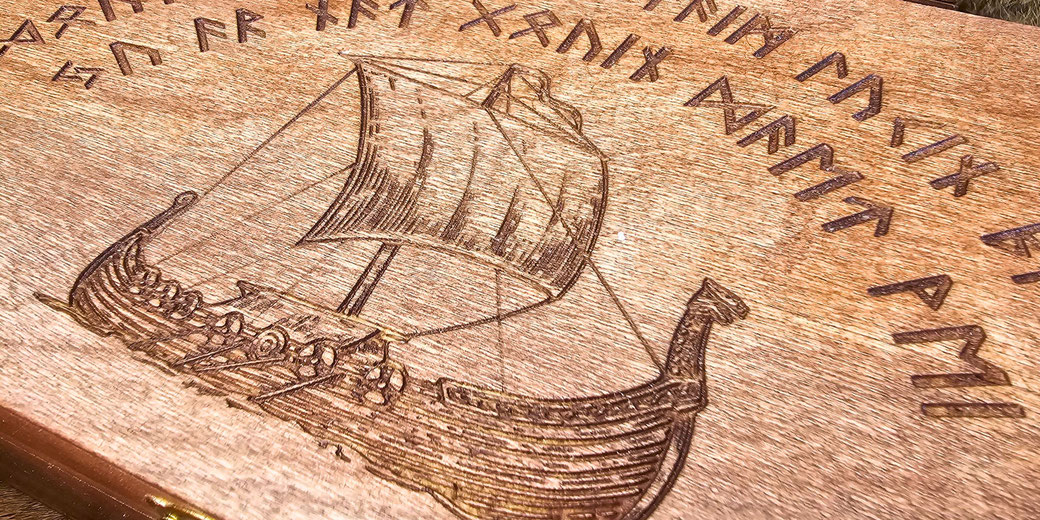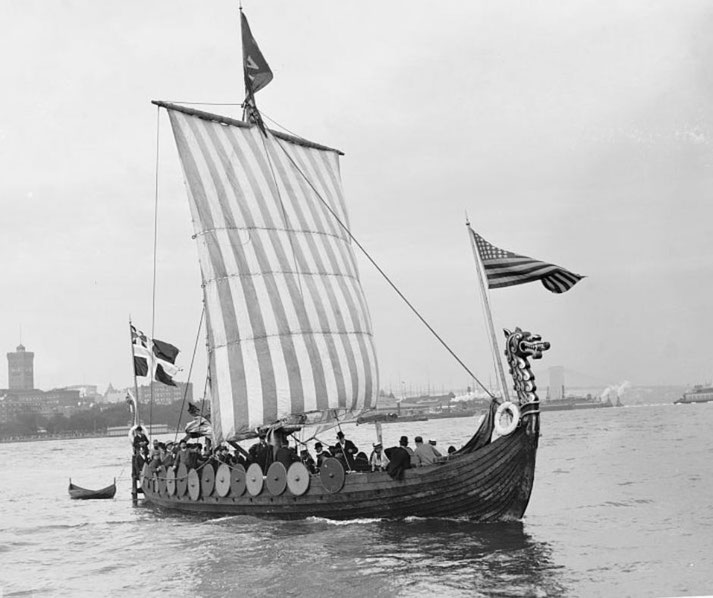What made the Viking longship so terrifyingly effective?

In the centuries between 793 and 1066, Viking longships brought fear to the coasts of Europe. These sleek, wooden vessels were more than just ships.
They were vessels built for raiding and exploring and featured design elements that ensured Norse raiders could continue their voyages, which gave them an overwhelming advantage over their enemies.
When the longship carved through stormy seas or glided silently up rivers, it had fast speed and easy handling that let them reach areas other ships could not.
Its design reflected the tough conditions of the North Atlantic and the goals of a people who used it to raid, trade, and colonise across thousands of kilometres.
How Viking longships were made
The longship's power began with its construction. Viking shipwrights used overlapping planks, a method called clinker-building, to create a hull that was both strong and flexible.
The planks, usually made of oak, were riveted together with iron nails and sealed with animal hair and tar.
This seal made the vessel watertight and allowed it to withstand rough seas. A central keel, introduced by the 8th century, gave key stability to maintain a straight course, which made long-distance voyages easier.
Its narrow width and shallow draft allowed it to travel close to shorelines and deep into rivers where larger ships could not follow.
This meant Viking raiders could strike unexpectedly, attack inland targets, and retreat before local forces could respond.
At full speed, the longship could reach up to 10 to 12 knots under ideal conditions, a notable speed for the era and faster than most other ships of that period.
Archaeological finds such as the Gokstad ship (about 23.8 metres long and 5.2 metres wide) and the richly decorated Oseberg ship, both preserved in Norway, provide detailed insight into these detailed builds.
One important feature of the longship was its ability to adapt. It could be powered by both sail and oar, which allowed it to continue moving in calm weather or in narrow waterways where sails were useless.
The large square sail, often made from wool and strengthened with leather, captured the wind on open seas, while as many as thirty oars allowed Viking warriors to row with precision in confined areas.
This versatility enabled longships to travel across the North Sea to the British Isles and even as far west as Iceland, Greenland, and Vinland, in North America, and as far east as the rivers of Rus’ and the Black Sea.
The famous voyages of Erik the Red and Leif Erikson would have been impossible without such reliable ships.

What made them so effective in battle
Their practical use in warfare was just as destructive. Viking longships allowed for rapid raids and swift withdrawals, tactics that confused and discouraged local populations.
The attack on Lindisfarne in 793 is the most famous early example. Monks and villagers watched helplessly as unknown ships appeared off the coast, their dragon-prowed bows sliced through the surf.
These were not slow merchant ships or heavily armed war galleys. Their light build enhanced speed and provided space for warriors who leapt ashore, pillaged, and vanished before any resistance could form.
This hit-and-run tactic became the hallmark of Viking warfare in the British Isles and across the Carolingian Empire.
Fortified towns and cities, which relied on warning systems and prepared defences, found themselves overtaken by the longship’s ability to bypass traditional barriers and strike where least expected.
In some sagas, it was said that dragon heads were removed upon returning home to avoid offending local spirits. This detail showed how fearsome the ships appeared even to their own people.
Furthermore, longships were ideal for amphibious operations. Their shallow hulls allowed Vikings to land directly on beaches or riverbanks without the need for ports or docks.
This mobility allowed Viking armies to raid targets far from the coast, as seen in the repeated attacks on Paris in the 9th century.
In 845, a fleet of longships led by a Danish chieftain, possibly the semi-legendary Ragnar Lodbrok, sailed up the Seine and sacked Paris, according to Frankish sources.
Charles the Bald, King of West Francia, had no choice but to pay a ransom of 7,000 pounds of silver, referred to in Latin sources as libras, to make them leave.
Similar raids were conducted along the Loire, the Rhine, and the Thames, including the Viking raid on London in 842 and the seizure of York in 866 by the Great Heathen Army.
These attacks were possible because longships could sail inland faster than mounted troops could respond, a key advantage in riverine warfare.
Longships and trade
Beyond their military value, longships also played a key role in Norse expansion and trade.
Viking traders used them to establish routes that stretched from the Baltic Sea to Byzantium and Baghdad.
They carried furs, amber, slaves, and walrus ivory in one direction, and returned with silver coins, silks, spices, honey, iron tools, and wine.
These journeys served as economic exchanges and ways of building networks and learning about distant lands.
Major trade hubs such as Hedeby, Birka, and Novgorod emerged as vital links in these trade routes.
The longship enabled Norsemen to settle in Ireland, Normandy, and parts of the British Isles.
In these new territories, they established towns and intermarried with local populations, spreading Norse language, customs, and technology.
Some Norsemen even entered the service of the Byzantine emperor as members of the elite Varangian Guard after they had arrived via rivers such as the Dnieper and the Volga.
The psychological effect of the longship also deserves attention. Its silhouette became a symbol of terror from England to the Mediterranean.
A curved hull and towering sail created a unique outline that was further emphasised by carved figureheads depicted as dragons or snakes to intimidate.
To coastal communities with no standing armies, a fleet of longships on the horizon could mean destruction, enslavement, or death.
The Anglo-Saxon Chronicle recorded Viking attacks year after year with growing fear.
In one such entry, the scribe wrote of the Lindisfarne raid: "Never before has such terror appeared in Britain as we have now suffered from a pagan race."
By the time Alfred the Great came to power in Wessex, he understood that countering the longship’s speed and range required a completely new defence plan, which included building fortified towns called burhs and a navy of his own composed of faster ships.
What do you need help with?
Download ready-to-use digital learning resources
Copyright © History Skills 2014-2025.
Contact via email
With the exception of links to external sites, some historical sources and extracts from specific publications, all content on this website is copyrighted by History Skills. This content may not be copied, republished or redistributed without written permission from the website creator. Please use the Contact page to obtain relevant permission.





